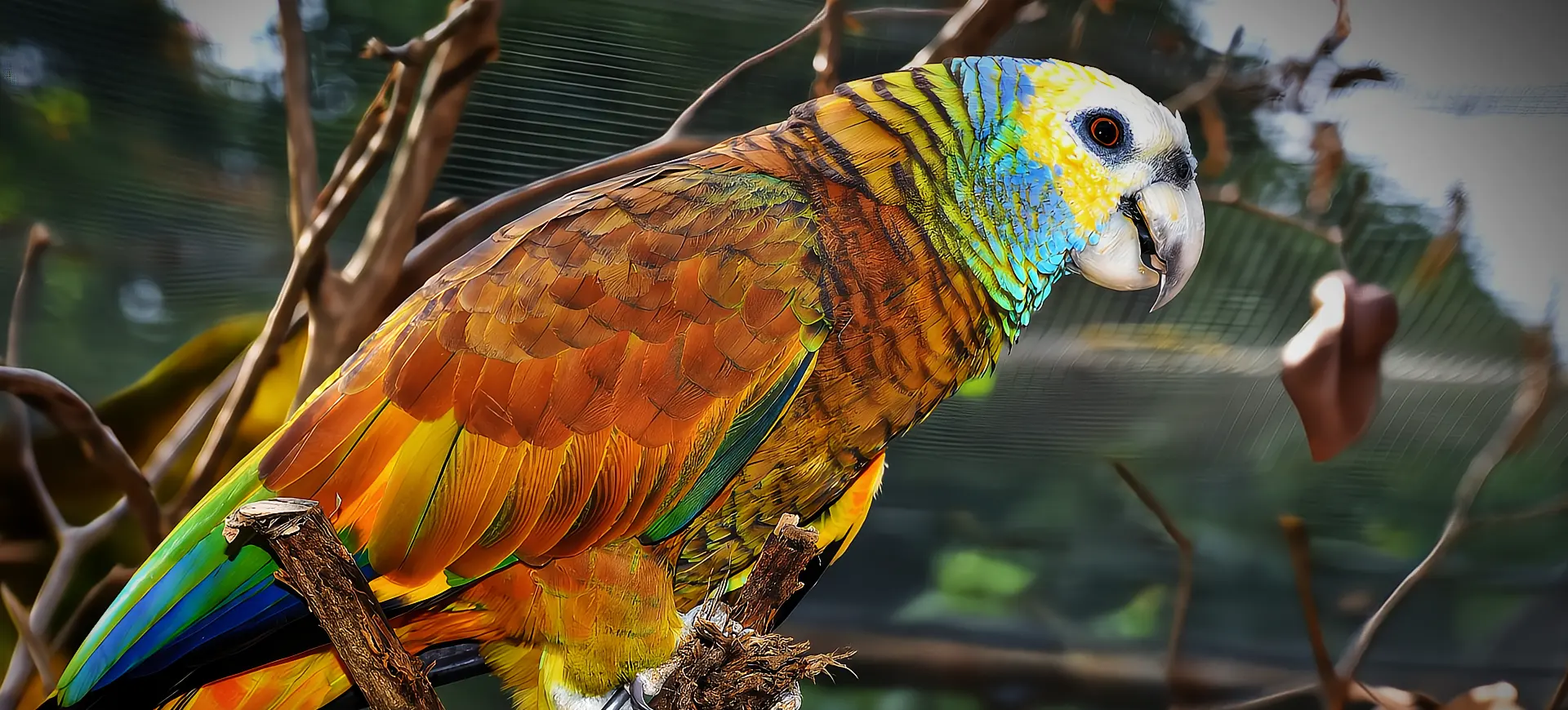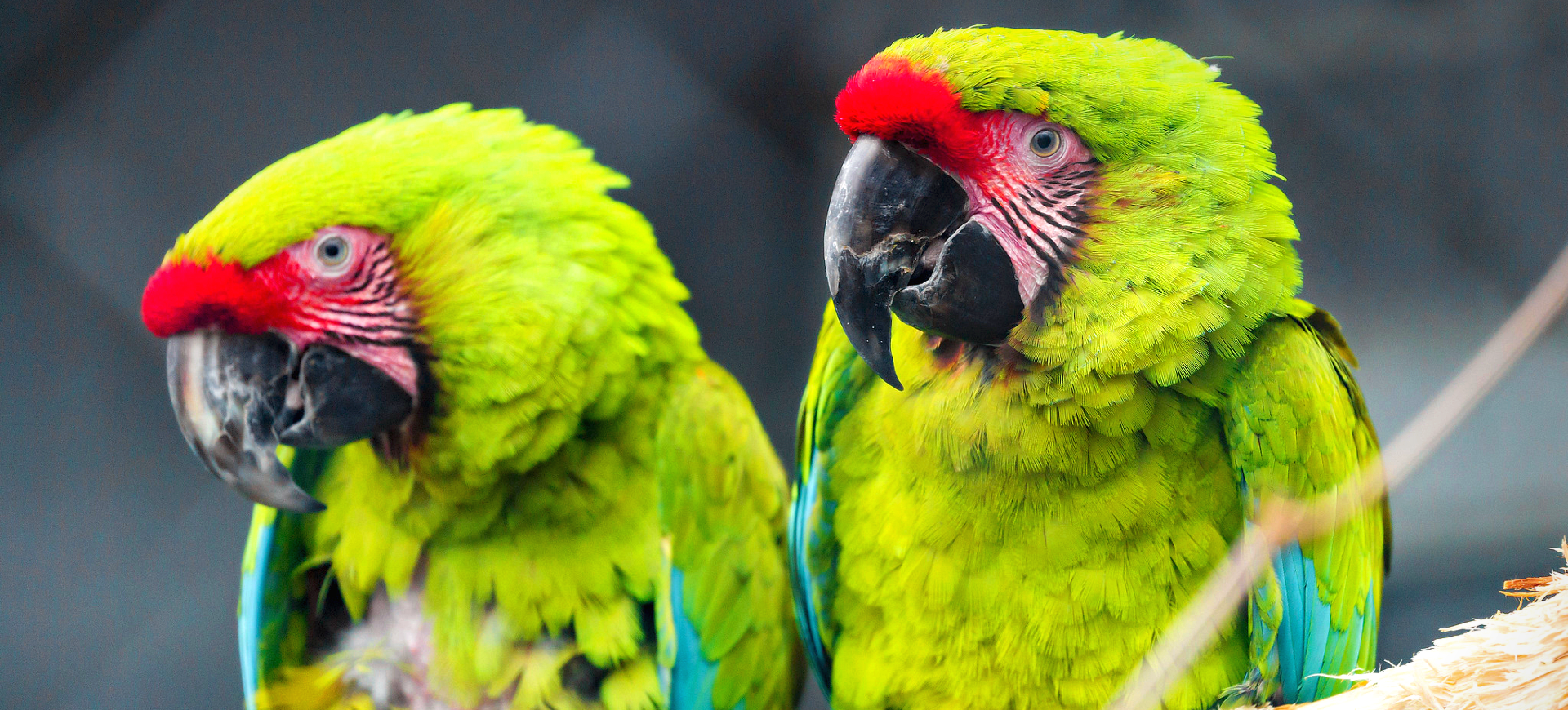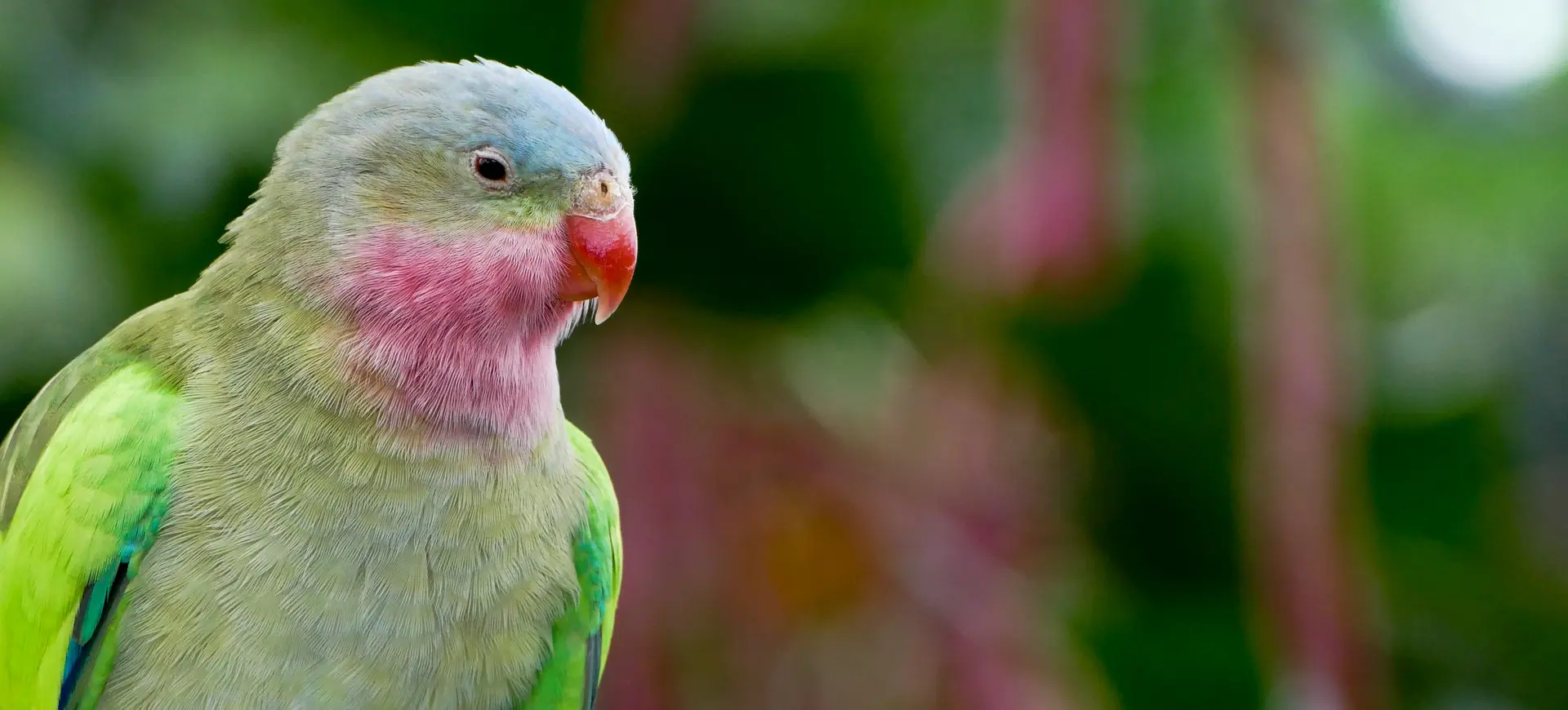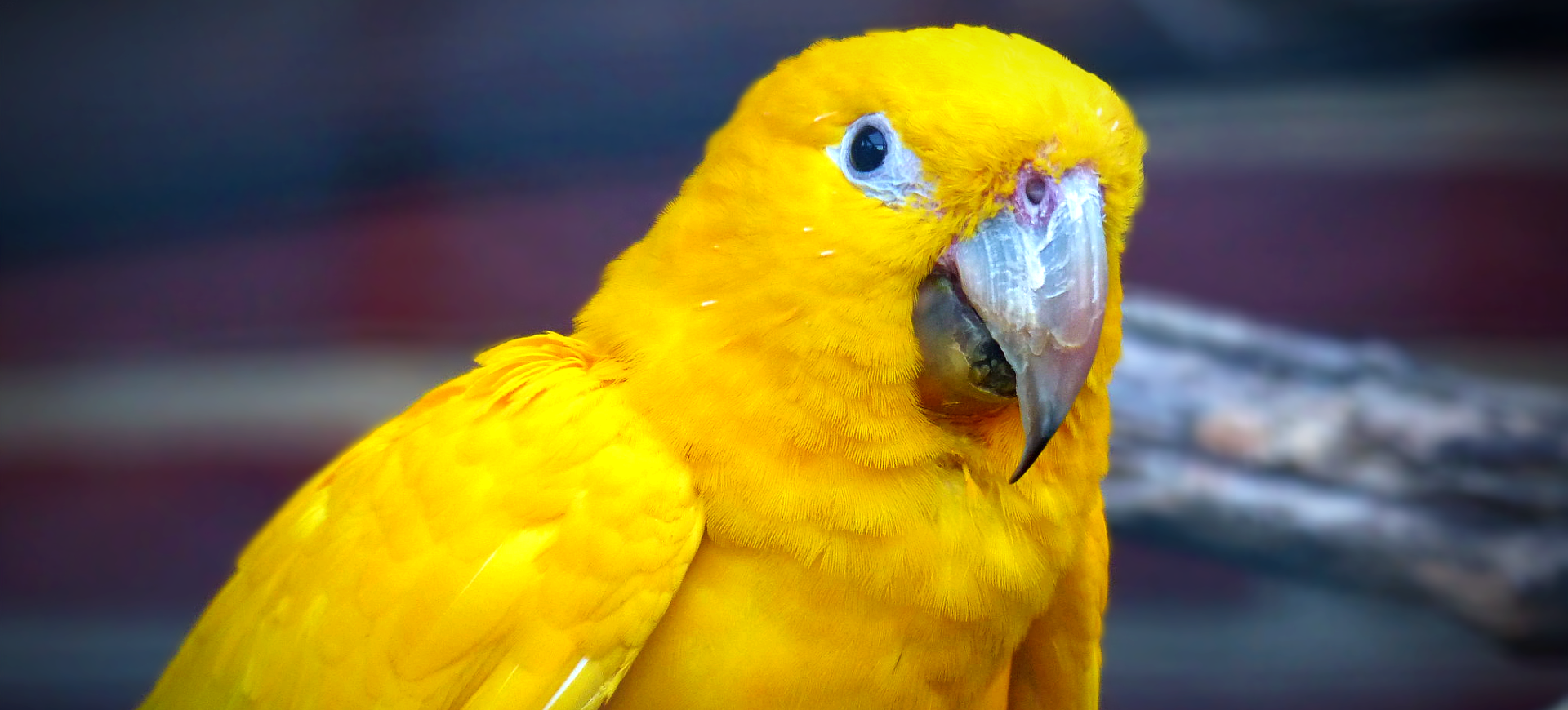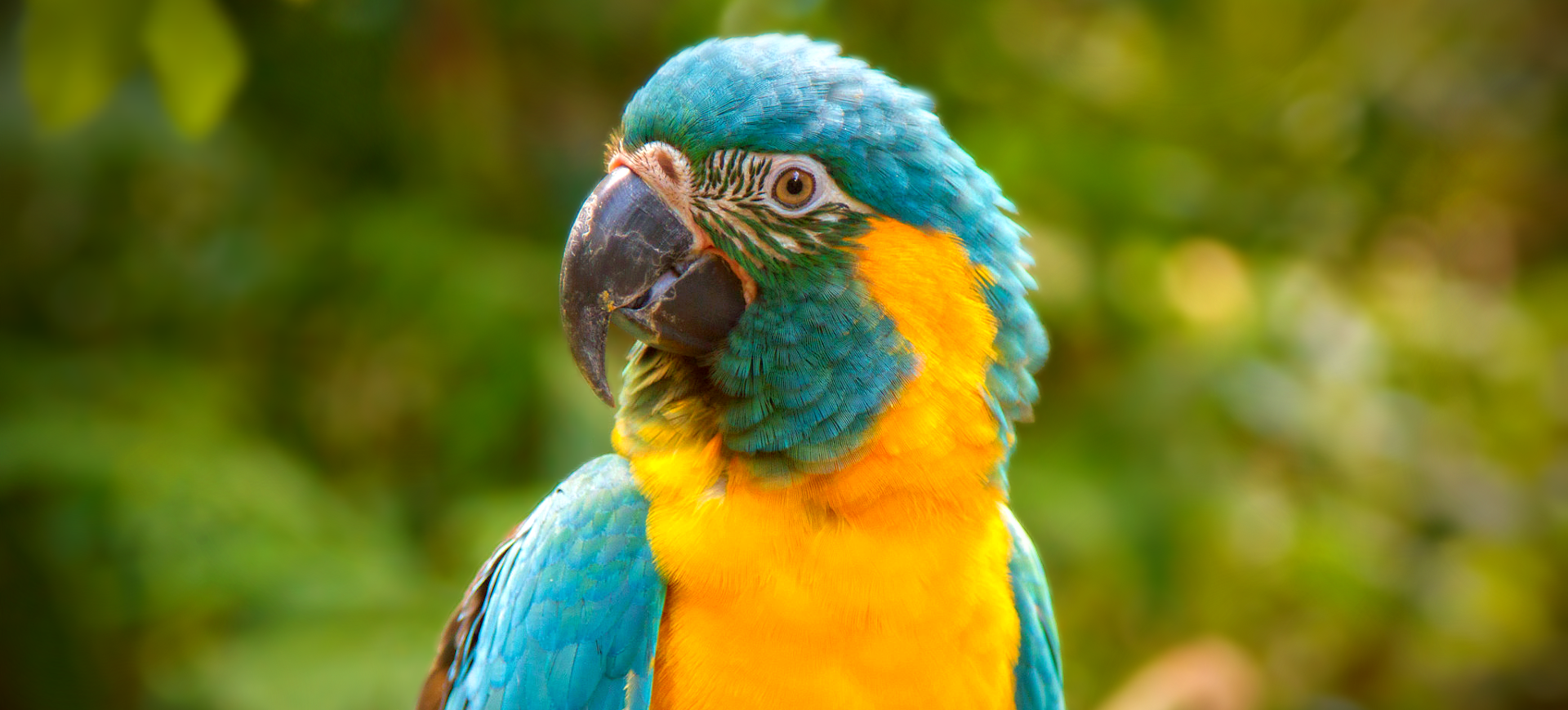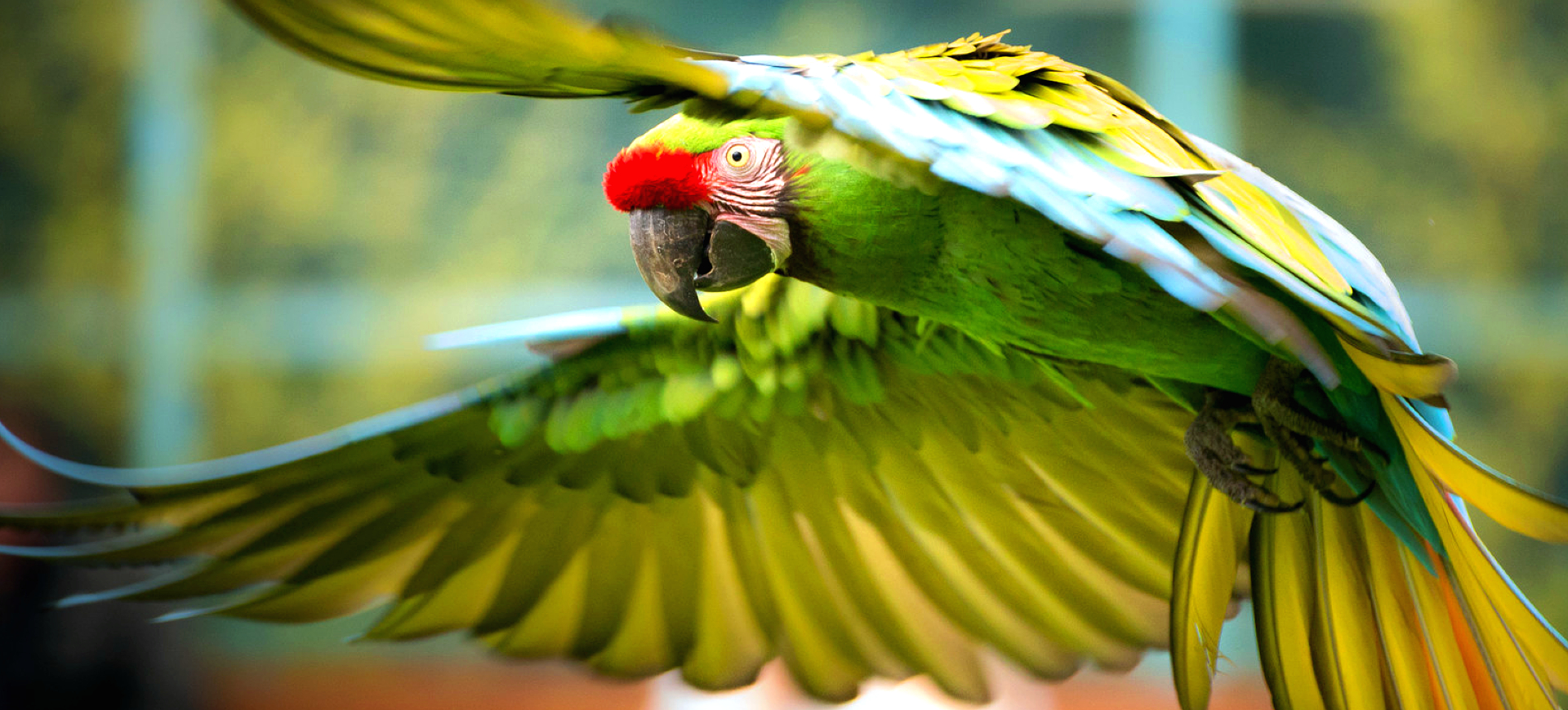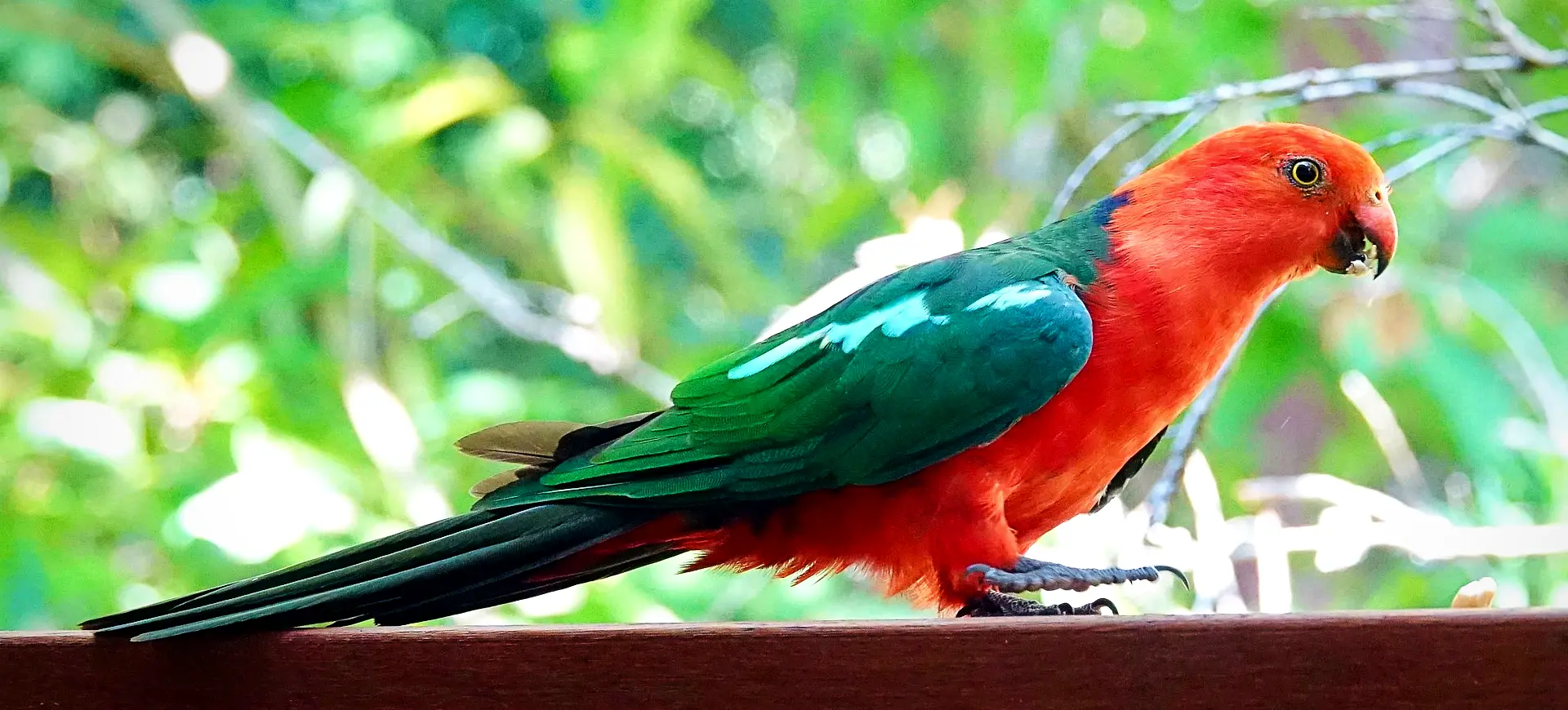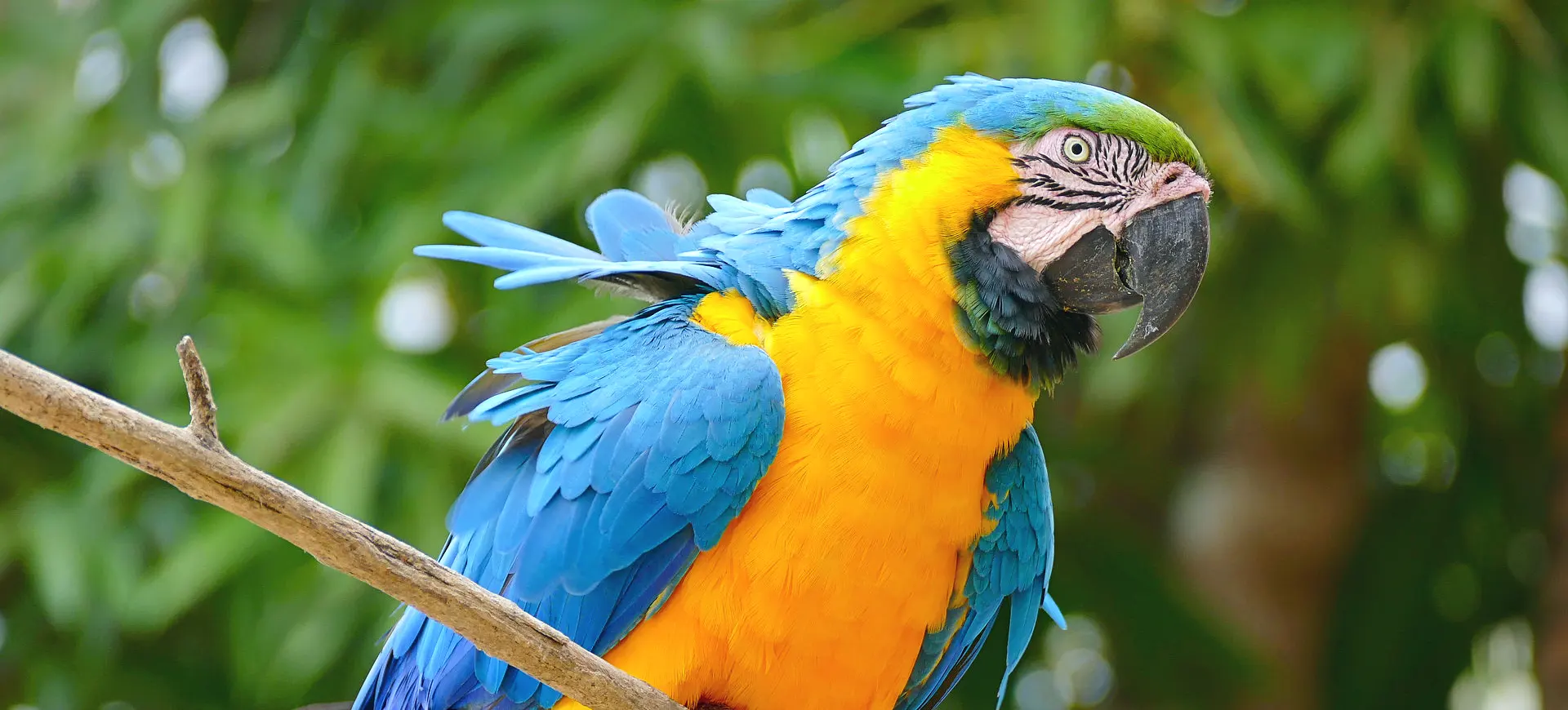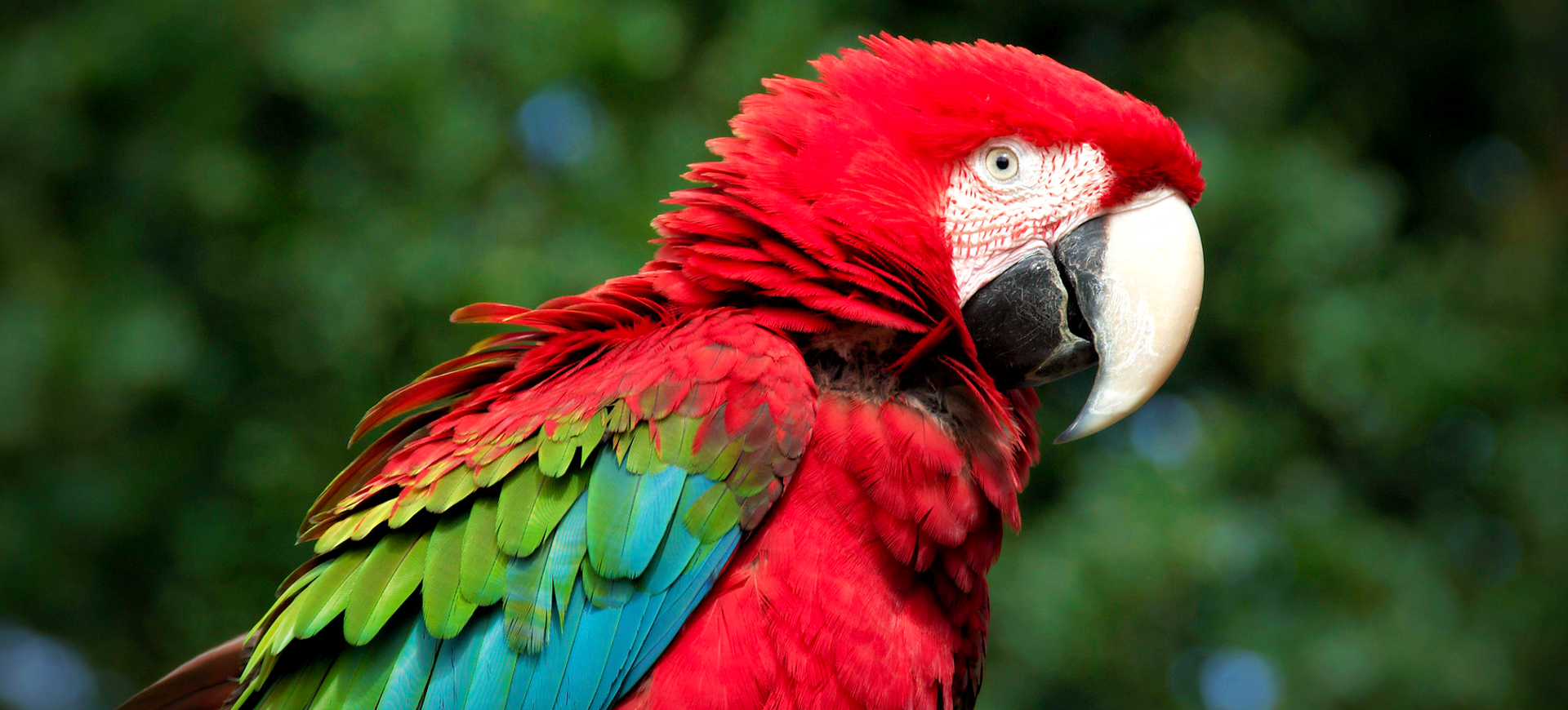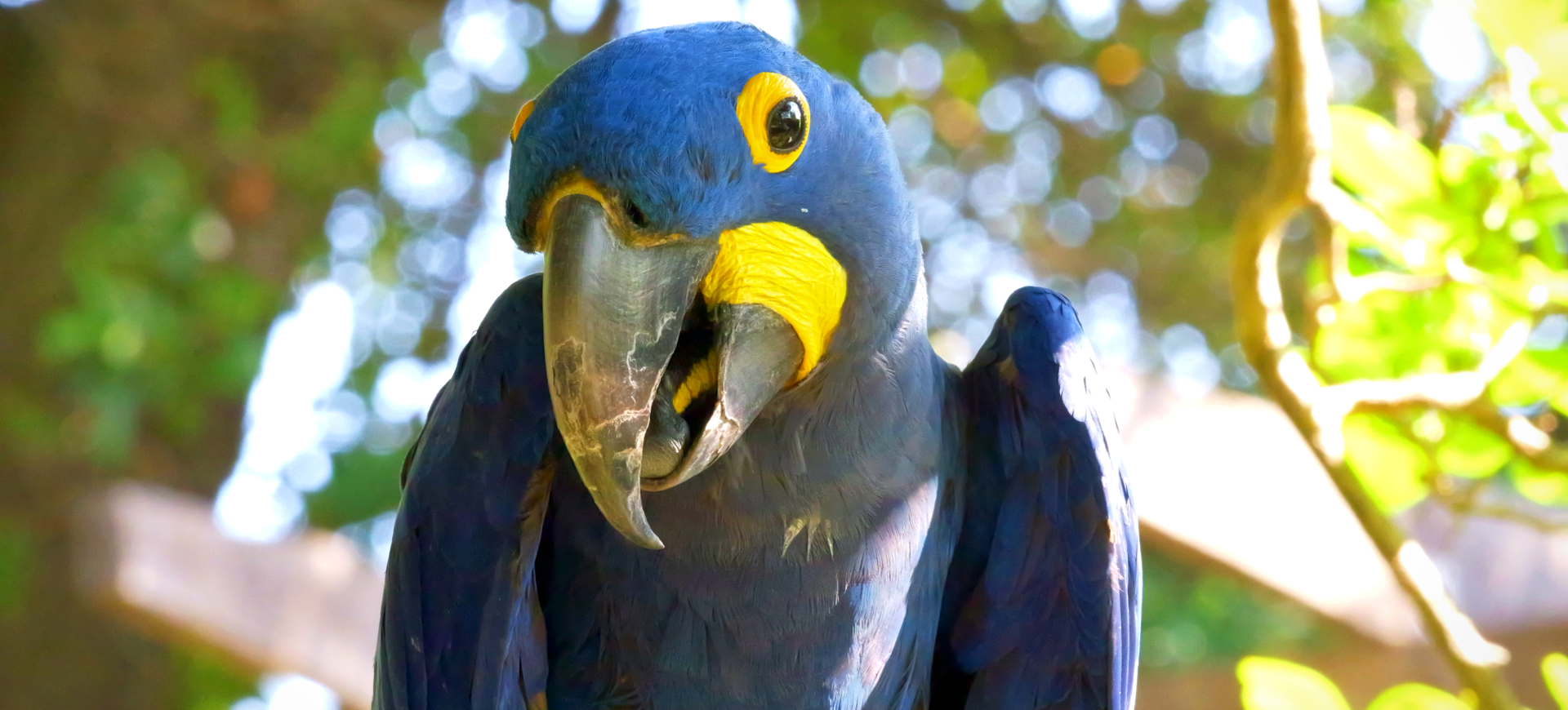Overview
The Thick-billed Parrot, a vibrant and charismatic bird, is native to the mountainous regions of Mexico, with historical ranges extending into the southwestern United States. This species is known for its striking green plumage, accented by a bright red forehead and shoulder patches, which makes it a visually captivating sight in its natural habitat. The parrot’s robust bill, designed to crack open tough pine seeds, is a distinctive feature that gives the bird its common name. Thick-billed Parrots live in flocks and are known for their loud, raucous calls that resonate through their forested environments, facilitating communication over long distances.
Their social structure is complex, involving tight-knit groups that engage in communal activities such as feeding and roosting. These parrots depend highly on pine forests for food and nesting sites, making them vulnerable to habitat loss and degradation. The birds migrate seasonally within their range, following the ripening of pine seeds, which form the bulk of their diet. This migration is essential for survival, highlighting the importance of conserving their habitats across their entire range to ensure year-round access to food sources.
Conservation efforts for the Thick-billed Parrot have been ongoing, focusing on habitat protection and restoration and attempts at reintroduction in areas where the species has been extirpated. Despite these efforts, the thick-billed parrot faces significant challenges due to logging, illegal pet trade, and climate change, threatening its survival. Protecting the old-growth pine forests they depend on is crucial for conserving this species, emphasizing the need for comprehensive environmental policies and community engagement in conservation practices.
Taxonomy
Kingdom
Phylum
Class
Order
Family
Genus
Species
Type
Physical Description:
The Thick-billed Parrot is a medium-sized parrot, notable for its predominantly green plumage that provides camouflage within the pine forests it inhabits. The vivid red forehead, cheeks, and shoulder patches are striking against the green, making individuals easily identifiable. Their thick, strong, curved bill is perfectly adapted for breaking open the hard shells of pine seeds, their primary food source. The birds also have a short, squared tail and strong, zygodactyl feet, adept at grasping and maneuvering through their arboreal habitat.
Adults typically display a uniform appearance in terms of coloration, with slight variations in the intensity of the red pigmentation among individuals. The sexual dimorphism in this species is minimal, making it challenging to differentiate between males and females based solely on external characteristics. Juveniles can be distinguished by their duller overall plumage and the absence or muted presence of red markings, which develop as they mature. The robust physique of the Thick-billed Parrot indicates its adaptability to the harsh conditions of high-altitude forests, showcasing the evolutionary traits that have enabled its survival.

Lifespan: Wild: ~30 Years || Captivity: ~40 Years

Weight: Male: 1.0-1.5 lbs (450-680 grams) || Female: 0.9-1.4 lbs (410-635 grams)

Length: Male & Female: 15-17 inches (38-43 cm)

Wingspan: Male & Female: 24-28 inches (61-71 cm)

Top Speed: 31 mph (50 km/h)
Characteristic:
Native Habitat:
The Thick-billed Parrot is indigenous to Mexico’s cool, mountainous pine forests, particularly in the Sierra Madre Occidental range. These forests provide the ideal habitat for the species, offering abundant food sources and nesting sites within mature pine trees. The elevation of their habitat ranges from mid to high levels, where the climate is cooler, and various species of pine dominate the vegetation.
Historically, their range extended into the southwestern United States, particularly in Arizona and New Mexico, where reintroduction efforts have been attempted. The species’ reliance on specific types of pine forests for survival makes it particularly susceptible to habitat loss and degradation, underscoring the importance of preserving these ecosystems. Conservation of the Thick-billed Parrot’s habitat benefits the species and supports biodiversity within these unique forest ecosystems.
Climate Zones:
Biogeographical Realms:
Continents:
Countries:
Diet:
Diet & Feeding Habits:
The diet of the Thick-billed Parrot is highly specialized, focusing almost exclusively on the seeds of various pine species found within their habitat. This parrot possesses a powerful bill that is adept at cracking open pine cones to access the seeds inside, a task that defines their feeding behavior and dietary preferences. The birds are often seen in large flocks foraging in pine trees, where their acrobatic abilities allow them to easily reach and manipulate cones.
In addition to pine seeds, Thick-billed Parrots may occasionally consume other plant materials, including fruits, berries, and possibly some insects, although these constitute a minor portion of their diet. Their feeding habits are closely tied to the seasonal availability of pine seeds, leading to nomadic movements in search of food. The conservation of pine forests is thus critical for the parrots’ nesting sites and ensuring a steady food supply throughout the year.
Mating Behavior:
Mating Description:
Thick-billed Parrots form monogamous pairs during the breeding season, with both sexes participating in nesting activities. They nest in cavities within large, mature pine trees, often reusing the same sites year after year. Selecting a nesting site is critical, with preference given to trees that offer protection from predators and the elements. Both males and females defend the nesting territory, showcasing a strong pair bond.
The female lays 2-4 eggs per clutch, with the incubation period lasting about 28 days. During this time, the male is responsible for feeding the female, and later, both parents share the duties of feeding the chicks. The young parrots are altricial, requiring several weeks of care before being ready to fledge. The success of their breeding efforts is closely tied to food availability and suitable nesting sites, highlighting the importance of conserving mature pine forests for their reproduction and survival.
Reproduction Season:
Birth Type:
Pregnancy Duration:
Female Name:
Male Name:
Baby Name:
Social Structure Description:
Thick-billed Parrots are highly social birds, forming large flocks outside the breeding season. These flocks provide safety in numbers and facilitate sharing information about food sources and potential threats. Within these flocks is a complex social hierarchy, with dominant individuals often leading the group to feeding and roosting sites.
The social bonds formed within flocks are important for the parrots’ overall well-being, providing opportunities for social learning and cooperation. During the breeding season, the focus shifts to the family unit, with pairs working together to raise their young. Understanding the social structure of Thick-billed Parrots is important for conservation efforts, as it influences their habitat use, feeding behavior, and breeding success.
Groups:
Conservation Status:
Population Trend:
The Thick-billed Parrot is classified as Endangered, with a population that is currently in decline. The primary threats to their survival include habitat loss due to logging and agricultural expansion, illegal pet trade, and the impacts of climate change on their pine forest habitats. The exact number of Thick-billed Parrots in the wild is difficult to determine due to their nomadic nature and the challenges in surveying their dense, mountainous habitats.
Conservation efforts are focused on habitat protection and restoration and legal protections to combat the illegal pet trade. Reintroduction programs have been attempted, with varying degrees of success, to establish populations in areas where the species has been extirpated. Ongoing research and monitoring are essential for assessing the effectiveness of these conservation strategies and for adapting approaches to ensure the species’ long-term survival.
Population Threats:
The Thick-billed Parrot faces several significant threats, with habitat loss and degradation at the forefront. Legal and illegal logging removes mature pine trees essential for nesting and feeding, while agricultural expansion reduces the extent of their habitat. The illegal pet trade also poses a risk, with birds captured for sale, leading to a decline in wild populations.
Climate change is an emerging threat, potentially altering the distribution and composition of pine forests and impacting the availability of food sources. Conservation measures must address these threats holistically through habitat protection, legal enforcement against poaching, and efforts to mitigate the impacts of climate change.
Conservation Efforts:
Conservation initiatives for the Thick-billed Parrot include habitat preservation, legal protection, and community engagement. Protected areas within their range are crucial for providing safe havens where the species can breed and feed without the threat of habitat destruction. Efforts to reforest and restore degraded pine forests are also underway, aiming to increase the availability of suitable habitats.
Legal protections help to combat the illegal pet trade, with regulations in place to prevent the capture and sale of wild parrots. Community engagement and education programs raise awareness of the species’ plight and the importance of conservation, encouraging local and indigenous communities to participate in conservation efforts. International collaboration is essential for addressing the cross-border challenges of habitat conservation and climate change mitigation, ensuring a coordinated approach to protecting the Thick-billed Parrot.
Additional Resources:
Fun Facts
- Thick-billed Parrots are among the few species adapted to cold, high-altitude environments.
- They can fly long distances in search of food, showcasing remarkable endurance.
- The species has a strong, resonant call that can be heard over long distances, facilitating communication within flocks.
- Thick-billed Parrots have a unique relationship with pine forests, relying on them for food and nesting sites.
- Conservation efforts for the Thick-billed Parrot also benefit other species that share their habitat, highlighting their role as a flagship species for pine forest conservation.
- They were once found in the southwestern United States, and efforts to reintroduce them to this area have sparked interest in cross-border conservation initiatives.
- The parrot’s specialized diet of pine seeds requires a powerful bill, which is among the most robust of any parrot species.
- Their bright plumage and social nature make them a favorite among birdwatchers, though viewing them in the wild can be challenging due to their elusive nature.
- The Thick-billed Parrot plays a crucial role in their ecosystem, helping to disperse pine seeds through their feeding habits.
- Conservation programs targeting the Thick-billed Parrot often involve local communities, highlighting the importance of human involvement in successful wildlife conservation.





